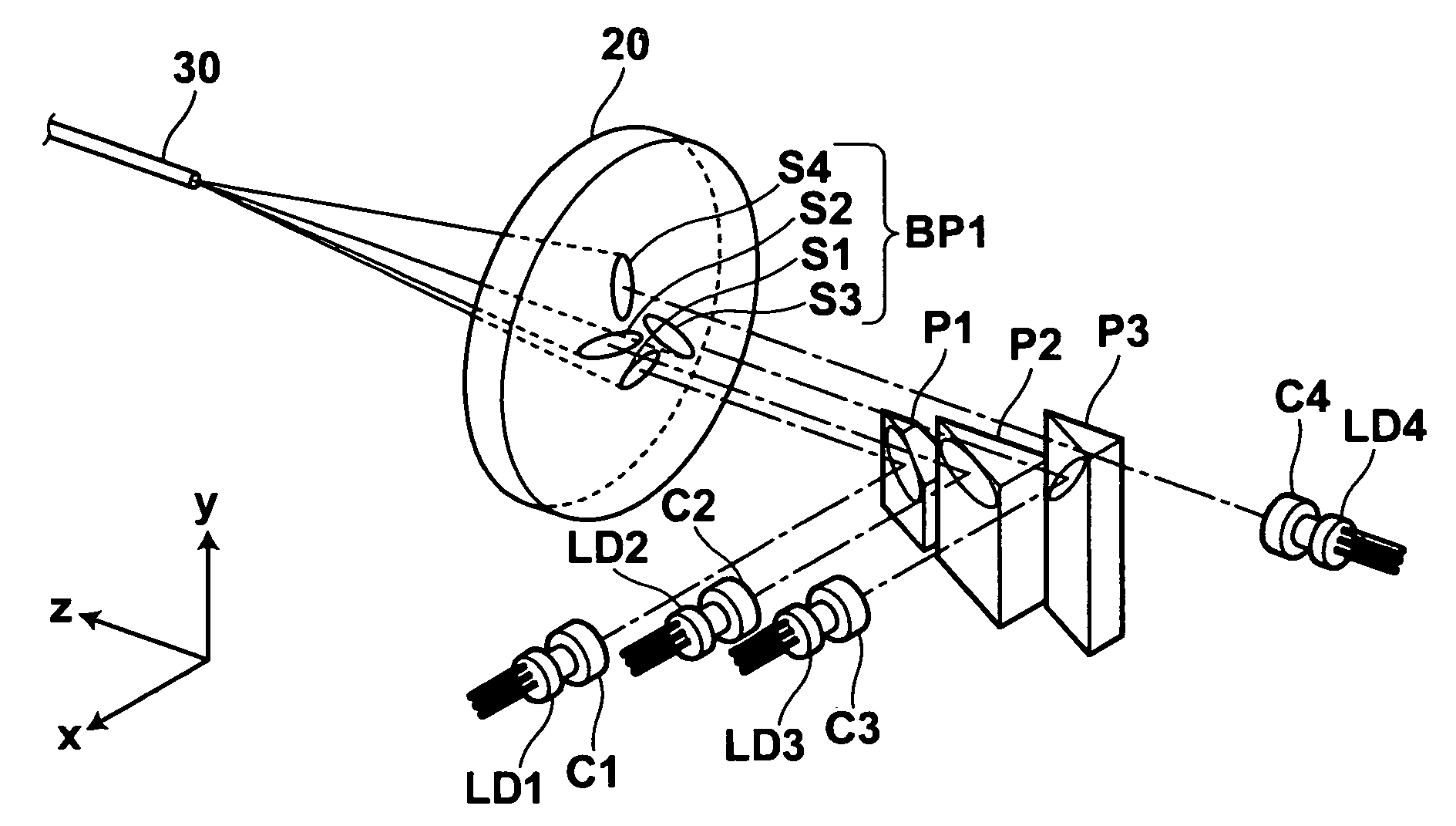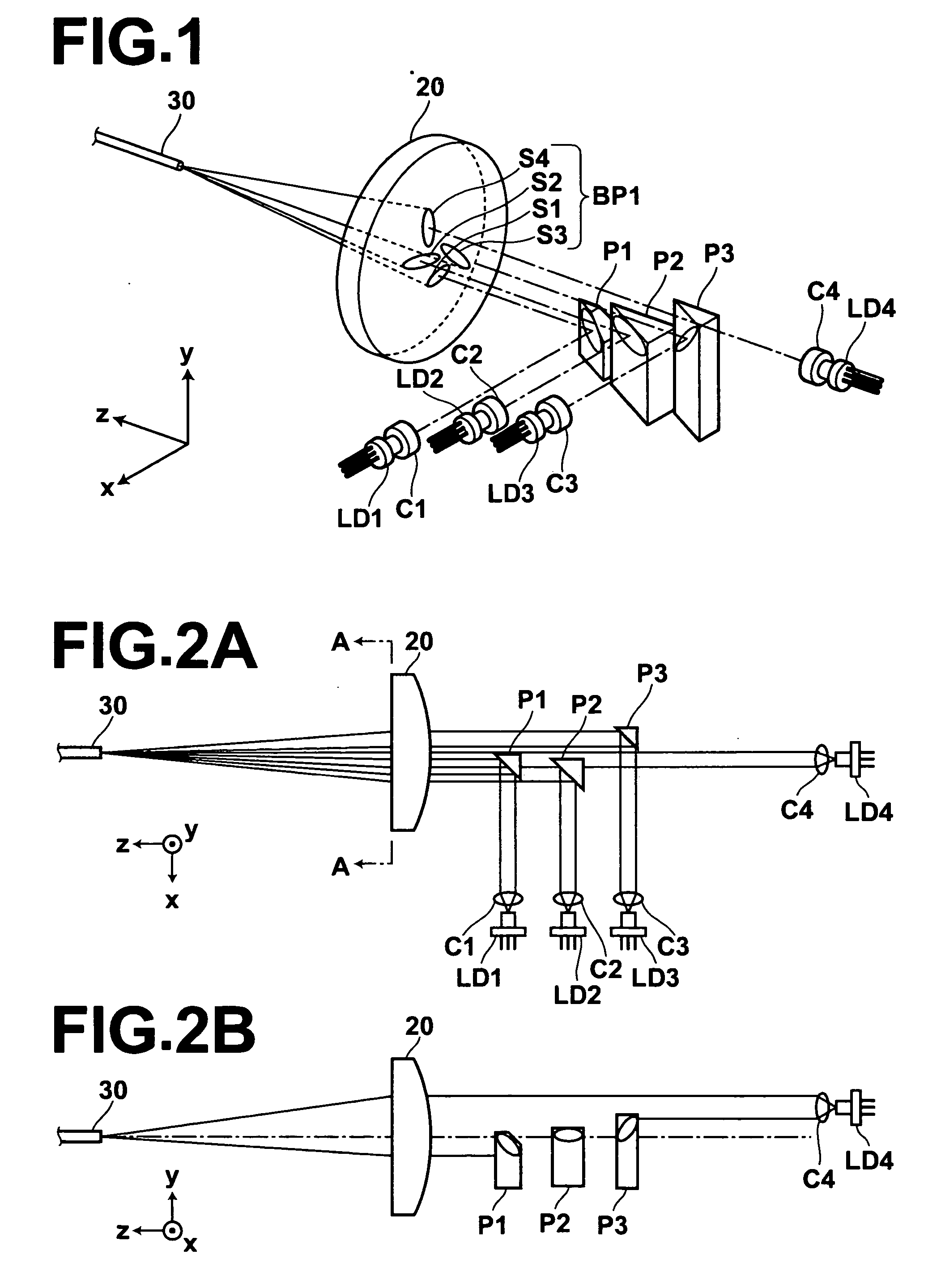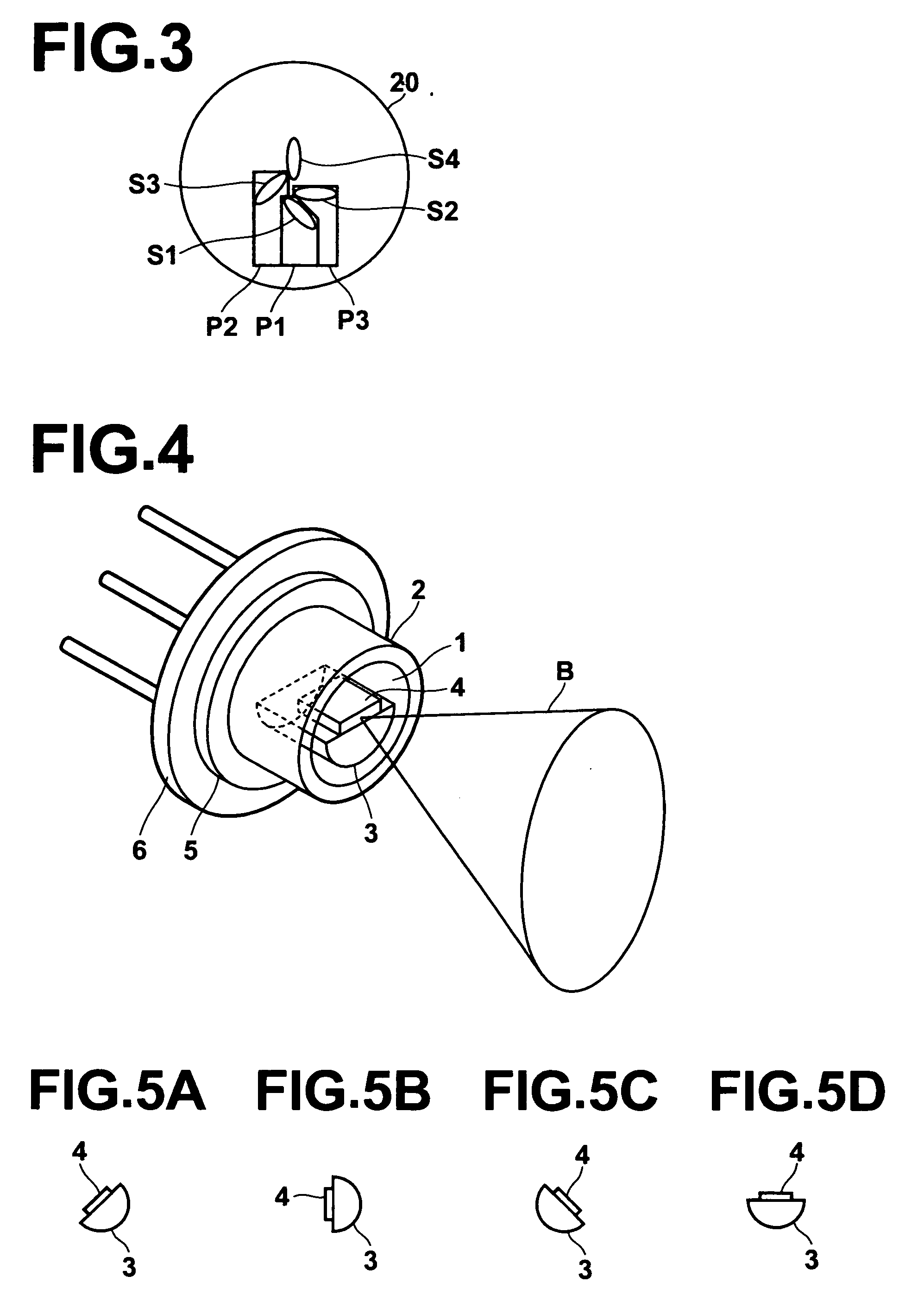Combined laser source having deflection member
a laser source and deflection member technology, applied in the field of combined laser sources, can solve the problems of inability to increase the numerical aperture (na) the inability to increase the focal length of the condensing lens, and the inability to reduce the core diameter of the optical fiber, so as to achieve the effect of reducing the cost, maximizing the utilization efficiency of the optical condensing system, and high intensity
- Summary
- Abstract
- Description
- Claims
- Application Information
AI Technical Summary
Benefits of technology
Problems solved by technology
Method used
Image
Examples
first embodiment
[0072] First, a combined laser source according to the first embodiment of the present invention is explained below with reference to FIGS. 1, 2A, 2B, and 3. FIGS. 1, 2A, and 2B are respectively perspective, plan, and side views of the combined laser source according to the first embodiment, and FIG. 3 is a front view of a portion, containing a condensing lens and deflection members, of the combined laser source according to the first embodiment, viewed from the position A-A indicated in FIG. 2A. In FIGS. 1, 2A, and 2B, the z direction corresponds to the direction of the optical axis of the condensing lens, and x and y directions are perpendicular to the z direction. Specifically, FIG. 2A is a view from the y direction, and FIG. 2B is a view from the x direction. In addition, semiconductor lasers and collimator lenses are not shown in FIG. 2B.
[0073] The combined laser source according to the first embodiment comprises four semiconductor lasers LD1, LD2, LD3, and LD4, four collimato...
second embodiment
[0102] Hereinbelow, a combined laser source according to the second embodiment of the present invention is explained below with reference to FIGS. 7, 8A, and 8B. FIGS. 7, 8A, and 8B are respectively perspective, plan, and side views of the combined laser source according to the second embodiment. In FIGS. 7, 8A, and 8B, the z direction corresponds to the direction of the optical axis of the condensing lens 20, and x and y directions are perpendicular to the z direction. Specifically, FIG. 8A is a view from the y direction, and FIG. 8B is a view from the x direction. In addition, semiconductor lasers and collimator lenses are not shown in FIG. 8B.
[0103] The combined laser source according to the second embodiment comprises eight semiconductor lasers LD1 through LD8, eight collimator lenses C1 through C8, eight deflection members P21 through P28, a condensing lens 20, and an optical fiber 30.
[0104] The eight semiconductor lasers LD1 through LD8 emit eight divergent laser beams. The ...
third embodiment
[0114] Hereinbelow, a combined laser source according to the third embodiment of the present invention is explained below with reference to FIGS. 9, 10A, and 10B. FIGS. 9, 10A, and 10B are respectively perspective, plan, and side views of the combined laser source according to the third embodiment. In FIGS. 9, 10A, and 10B, the z direction corresponds to the direction of the optical axis of the condensing lens 20, and x and y directions are perpendicular to the z direction. Specifically, FIG. 10A is a view from the y direction, and FIG. 10B is a view from the x direction. In addition, semiconductor lasers and collimator lenses are not shown in FIG. 10B.
[0115] The combined laser source according to the third embodiment comprises seven semiconductor lasers LD1 through LD7, seven collimator lenses C1 through C7, seven deflection members P31 through P37, a condensing lens 20, and an optical fiber 30.
[0116] The seven semiconductor lasers LD1 through LD7 emit seven divergent laser beams...
PUM
 Login to View More
Login to View More Abstract
Description
Claims
Application Information
 Login to View More
Login to View More - R&D
- Intellectual Property
- Life Sciences
- Materials
- Tech Scout
- Unparalleled Data Quality
- Higher Quality Content
- 60% Fewer Hallucinations
Browse by: Latest US Patents, China's latest patents, Technical Efficacy Thesaurus, Application Domain, Technology Topic, Popular Technical Reports.
© 2025 PatSnap. All rights reserved.Legal|Privacy policy|Modern Slavery Act Transparency Statement|Sitemap|About US| Contact US: help@patsnap.com



